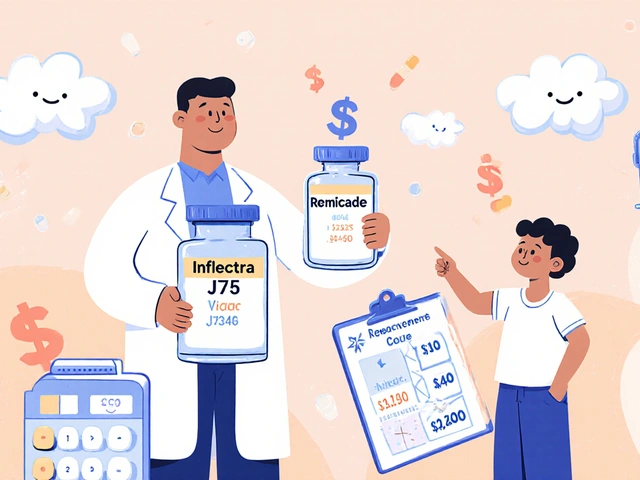When your immune system turns against your own body, it doesn’t just cause discomfort-it can destroy joints, damage organs, and change your life. For people with rheumatoid arthritis, psoriatic arthritis, or ankylosing spondylitis, the fight isn’t just against pain. It’s against a system that won’t stop attacking. That’s where DMARDs and biologic medications come in. These aren’t just painkillers. They’re disease-modifying tools designed to slow or stop the damage before it’s too late.
What Exactly Are DMARDs?
DMARD stands for disease-modifying antirheumatic drug. These are medications that don’t just mask symptoms-they change how your immune system behaves. Unlike ibuprofen or acetaminophen, which temporarily reduce inflammation, DMARDs work deep inside your body to calm the overactive immune response that’s causing the damage. There are three main types:- Conventional synthetic DMARDs - These are the older, pill-based drugs like methotrexate, leflunomide, and hydroxychloroquine. They’ve been around since the 1980s and are still the first line of treatment for most people.
- Biologic DMARDs - These are newer, targeted therapies made from living cells. They block specific parts of the immune system, like TNF-alpha or IL-6, that drive inflammation.
- Targeted synthetic DMARDs - These are oral pills like tofacitinib and upadacitinib that block specific enzymes inside immune cells, called JAK enzymes, which signal inflammation.
Most rheumatologists start with a conventional DMARD-usually methotrexate-because it’s effective, well-studied, and affordable. A typical dose is 7.5 to 25 mg once a week. Many patients see improvement in 6 to 12 weeks. But if symptoms don’t improve, or if the disease keeps progressing, doctors move to biologics or JAK inhibitors.
How Biologics Work Differently
Biologics are not like traditional drugs. They’re made from proteins, often antibodies, that are designed to lock onto one specific target in your immune system. Think of them as precision missiles instead of a shotgun blast. For example:- Infliximab and adalimumab block TNF-alpha, a major inflammatory signal.
- Rituximab wipes out B cells, the immune cells that produce harmful antibodies.
- Tocilizumab blocks IL-6, another key player in joint damage.
- Abatacept stops T cells from getting activated in the first place.
These drugs are given either as an IV infusion at a clinic or as a self-injection at home. Most people learn to inject themselves after one or two training sessions with a nurse. The injections are usually weekly or every other week. Unlike pills, biologics can’t be taken orally-they’d get broken down in the stomach.
Because they’re so targeted, biologics often work faster than conventional DMARDs. Some patients feel better in as little as 2 to 4 weeks. But that precision comes with a cost: they suppress your immune system in a very specific way, making you more vulnerable to serious infections.
Why Doctors Start with Conventional DMARDs
You might wonder: if biologics are more powerful, why not start with them? The answer is simple: risk, cost, and time. Conventional DMARDs like methotrexate have been used for over 40 years. We know their side effects inside and out. They’re cheap-generic methotrexate costs about $4 to $30 a month in the U.S. Biologics? Without insurance, they can run $1,000 to $5,000 a month. Also, biologics aren’t magic. About 30% of people with rheumatoid arthritis don’t respond well to methotrexate alone. That’s the group that moves on to biologics. For others, methotrexate alone is enough to keep the disease under control. Doctors follow a step-up approach because it’s safer and smarter. Start with the least risky, most affordable option. If it doesn’t work, then go up. It’s not about being cautious-it’s about avoiding unnecessary risk.
Side Effects: What to Watch For
All DMARDs carry risks. But the types of side effects differ. With conventional DMARDs:- Nausea (affects 20-30% of methotrexate users)
- Fatigue
- Mouth sores
- Increased liver enzymes (requires monthly blood tests)
- Low white blood cell count
Regular blood work every 4 to 8 weeks is standard during the first few months. Once you’re stable, it drops to every 8 to 12 weeks.
Biologics bring different risks:- Injection site reactions (redness, itching, swelling-seen in 15-40% of users)
- Higher risk of serious infections like pneumonia, tuberculosis, or sepsis
- Reactivation of latent viruses (like hepatitis B)
- Increased risk of certain cancers (though rare)
Patients on biologics are screened for TB before starting. If you have a fever, sore throat, cough, or unexplained fatigue, you need to call your doctor right away. These aren’t just cold symptoms-they could be signs of something serious.
Some people develop antibodies against the biologic, making it less effective over time. That’s why switching between different biologics is sometimes necessary. It’s not failure-it’s adaptation.
Real-World Experience: What Patients Say
One woman in Bristol, diagnosed with rheumatoid arthritis at 38, started on methotrexate. After three months, her hands were still swollen. She couldn’t hold a coffee cup without pain. Her doctor switched her to adalimumab. Within six weeks, her pain dropped by 70%. She could hold her grandchild again. But it wasn’t easy. She had to learn how to inject herself. She kept a log of every injection, every side effect. She missed work twice because of fatigue. Her insurance required a prior authorization that took six weeks to approve. She paid $520 out of pocket each month until her plan changed. Another man stopped his biologic after two years because he got a severe lung infection. He recovered, but he had to switch to a different class of drug. He now takes tofacitinib-a JAK inhibitor-once a day. It’s a pill. No injections. But he still gets blood tests every two months. These stories aren’t rare. They’re common. The journey with DMARDs isn’t linear. It’s trial, error, adjustment, and sometimes, restart.Cost, Access, and Biosimilars
The price of biologics has been a huge barrier. In the U.S., some cost more than a mortgage payment. But things are changing. Since 2016, biosimilars have entered the market. These are near-identical copies of original biologics, approved by the FDA after proving they work the same way. Humira’s biosimilars, for example, cost 15-30% less. That’s saved thousands of patients thousands of dollars. Still, getting insurance approval can take weeks. Some patients wait 2 to 6 weeks just to start treatment. That delay can mean more joint damage. Many rheumatology clinics now have financial navigators who help with paperwork, appeals, and patient assistance programs. In the UK, DMARDs are largely covered by the NHS. But access to newer biologics can vary by region. Waiting lists for rheumatology clinics are long. That’s why early diagnosis and prompt treatment matter more than ever.
What’s Next? The Future of DMARD Therapy
The field is moving fast. In 2019, upadacitinib (Rinvoq) was approved as an oral JAK inhibitor for rheumatoid arthritis. In 2022, it was approved for psoriatic arthritis. It’s once-daily, no injections. More are coming. Researchers are now testing drugs that target even more specific pathways-like IL-17, IL-23, and others-aiming for better results with fewer side effects. Some are even exploring ways to reset the immune system entirely, using cell therapies or gene editing. The American College of Rheumatology predicts biologic use will grow 5-7% annually through 2030. But cost and access remain huge challenges, especially outside wealthy countries. For now, DMARDs-both conventional and biologic-are the backbone of autoimmune disease treatment. They don’t cure, but they give people back their lives. They let people work, walk, hug their kids, and live without constant pain.What You Can Do Today
If you’re on DMARD therapy:- Take your medication exactly as prescribed-even if you feel fine.
- Don’t skip blood tests. They catch problems before they become emergencies.
- Report any new fever, cough, or unusual fatigue to your doctor immediately.
- Get your flu shot and pneumococcal vaccine every year. Avoid live vaccines.
- Wash your hands often. Avoid crowds during flu season.
- Ask about biosimilars. They’re just as effective and much cheaper.
If you’re just starting out, don’t be afraid. DMARDs aren’t a last resort. They’re your best chance to stop the disease before it stops you.
Are DMARDs the same as steroids?
No. Steroids like prednisone reduce inflammation quickly but don’t stop long-term joint damage. They’re used short-term to control flare-ups. DMARDs work slowly but change the disease course. Long-term steroid use causes serious side effects like bone loss, weight gain, and diabetes. DMARDs are safer for ongoing use.
Can I stop taking DMARDs if I feel better?
Not without talking to your doctor. Even if your symptoms disappear, the immune system may still be attacking your joints. Stopping too soon can lead to a flare-up, sometimes worse than before. Some patients can reduce their dose over time under close supervision, but most need to stay on some form of DMARD long-term.
Do biologics cause weight gain?
Biologics themselves don’t directly cause weight gain. But because they reduce pain and inflammation, many people become more active, which can lead to weight loss. Some patients gain weight because they’re eating better or moving more. If you’re gaining weight, it’s more likely due to lifestyle changes or other medications like steroids, not the biologic.
How long does it take for biologics to work?
Some people notice improvement in 2 to 4 weeks. Most see clear results by 12 weeks. If there’s no change after 3 months, your doctor may switch you to a different biologic or try a JAK inhibitor. Patience is key-but not infinite. Your doctor will monitor progress closely.
Can I drink alcohol while on DMARDs?
Moderate alcohol is usually okay, but it depends on the drug. Methotrexate can stress your liver, so heavy drinking increases the risk of liver damage. Most doctors recommend no more than 1-2 drinks per week. Always check with your rheumatologist-your liver enzymes will be monitored regularly.
Are there natural alternatives to DMARDs?
Diet, exercise, and stress management can help reduce symptoms and improve quality of life. But no supplement, herb, or diet has been proven to stop joint damage like DMARDs do. Relying only on natural methods can lead to irreversible damage. DMARDs are the only proven way to modify the disease. Use lifestyle changes as support-not replacement.
What to Do Next
If you’re on DMARDs and not feeling better:- Keep a symptom journal-note pain levels, fatigue, swelling, and side effects.
- Ask your doctor about switching to a different DMARD or adding a biologic.
- Request a referral to a rheumatology specialist if you haven’t seen one.
- Ask about financial assistance programs or biosimilars to lower costs.
If you’ve just been diagnosed:
- Don’t panic. DMARDs are the standard for a reason-they work.
- Ask for a clear treatment plan: which drug, how often, what tests, what to watch for.
- Connect with patient support groups. Real stories help more than brochures.
- Start moving. Gentle exercise like swimming or yoga helps maintain joint function.
DMARDs aren’t perfect. But they’re the most powerful tool we have to take back control from autoimmune disease. The goal isn’t just to survive-it’s to live.






11 Comments
Just wanted to say this is one of the clearest breakdowns of DMARDs I’ve ever read. Seriously, if you’re new to this, read it twice. I’ve been on methotrexate for 8 years and still learn something new every time someone explains it like this. You’re not alone out there.
Biologics cost more than my rent. And no, I’m not joking. My insurance made me jump through 17 hoops just to get adalimumab approved. Meanwhile, my joints are turning to dust. This system is broken. I’m not asking for a miracle-I’m asking for access.
OMG YES. I started on methotrexate and thought I was gonna die from the nausea… then switched to Rinvoq and now I’m hiking again 😭👏 No more ‘I can’t hold my coffee’ days. You guys are warriors. Keep going. You’ve got this 💪❤️
Hey everyone-just wanted to share something real quick. I’m a nurse in a rheum clinic and I see so many people scared to start meds because they think it’s ‘giving up’ or ‘weak.’ Nope. Taking DMARDs is the bravest thing you can do. You’re not losing control-you’re taking it back. And yes, the blood tests suck. But they’re saving your future. I’ve seen people go from wheelchairs to walking their kids to school. It’s not magic. It’s medicine. And you deserve it.
Ugh I HATE when people say ‘just exercise more’ like it’s a cure. I tried yoga. I tried acupuncture. I tried ‘anti-inflammatory diets.’ My joints still feel like they’re being ground up by a cement mixer. DMARDs? The only thing that actually worked. Stop romanticizing ‘natural’ crap. This isn’t a wellness blog. It’s a war.
India’s a joke for access. Methotrexate? Available. Biosimilars? Available. But the rheum doc? You need a 6-month waitlist. And then they say ‘try steroids first.’ Steroids? I’m 32. I don’t want osteoporosis at 40. Why is everything so backwards here?
Regarding alcohol and methotrexate: the liver toxicity risk is dose-dependent and cumulative. While moderate consumption (≤14 units/week) is generally tolerated in stable patients, concurrent hepatotoxicity from other sources-including NSAIDs or obesity-significantly elevates risk. Always confirm ALT/AST trends before assuming safety. Your rheumatologist’s guidance supersedes internet anecdotes.
It is, of course, entirely predictable that the American healthcare system would commodify life-saving biologics-while simultaneously glorifying the ‘patient journey’ as if it were a TED Talk. The fact that we still refer to ‘step-up’ protocols in 2024, when biosimilars are legally approved and clinically equivalent, is not ‘cautious’-it is criminal negligence. The pharmaceutical industry is not your friend. The system is rigged. And you? You’re just a revenue stream with a pulse.
I appreciate the clinical accuracy, but I must emphasize: the emotional toll of chronic illness is not addressed here. The isolation. The guilt of being a burden. The fear that your body is betraying you every morning. No article, no matter how well-written, can replace the validation that comes from someone saying: ‘I see you. This is hard. And you’re not broken.’
The data on JAK inhibitors and thrombotic risk remains concerning. The FDA’s 2021 black box warning for tofacitinib and upadacitinib cited increased rates of pulmonary embolism and major adverse cardiovascular events in patients over 50 with CV risk factors. This is not theoretical. It is statistically significant. The trade-off between efficacy and safety must be individualized-not standardized. A one-size-fits-all approach to immunosuppression is dangerous.
Just wanted to say thank you for writing this. I’ve been on biologics for 5 years. I cry every time I inject myself. But I held my daughter’s hand at her graduation last week. That’s worth every needle. You’re not alone. We’re in this together. 🤍